Volume of revolution
Categories: integration calculus

If we take a curve y = f(x), in xyz space, we can create a 3D shape by rotating the curve about the x-axis. We will use the function:
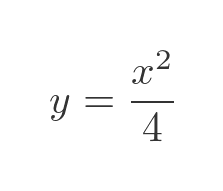
Here is the function. The RHS shows the function mirrored over the x-axis to show what happens when we rotate it about that axis. The dashed grey ellipses indicate the rotation:
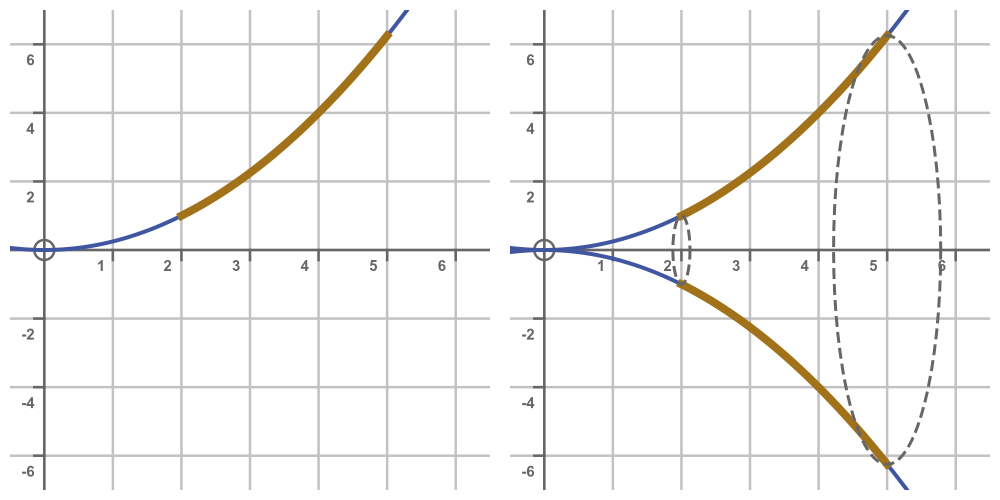
This is called a solid of revolution. We have chosen to create our shape using the section of the curve between x = 2 and x = 5, so we get a solid of finite size. Here is the shape this creates, as a 3D plot:
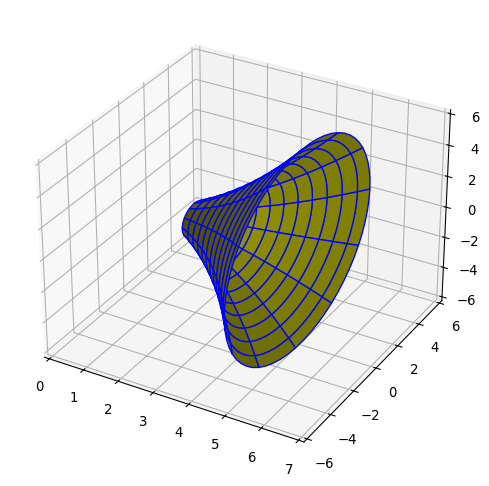
We can calculate the volume of this 3D shape using integration. This article explains how.
Calculating the volume of revolution for a simple function
We will start by looking at a simple function where the volume can, very easily, be calculated geometrically. We will look at the function y = 2, between x = 1 and x = 4. This function is a horizontal line, parallel to the x-axis. If we rotate it about the x-axis we get a cylinder:

A cylinder is a type of prism that has circular ends, and the volume of any prism is equal to the surface area A of the end of the prism multiplied by its length l. In this case, the end of the cylinder is a circle of radius r, so the area of the end of the cylinder is:
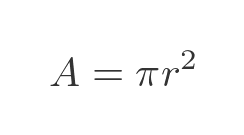
This means that the volume of the cylinder is:
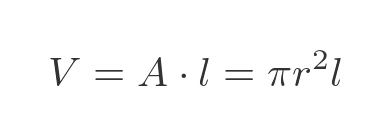
Substituting the known vales for r and l gives the volume V as:
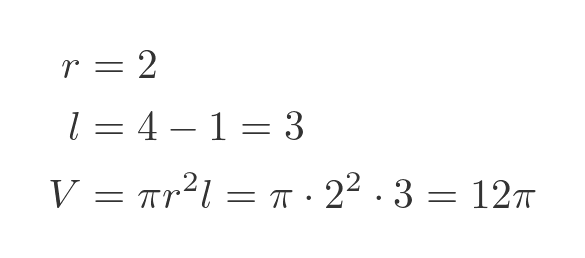
Volume of a curved solid of revolution
How can we find the volume of our curved solid (created by rotating the function f(x) about the x-axis)? Well, one thing we could do is find the approximate volume by dividing the volume into a set of cylinders, like this:
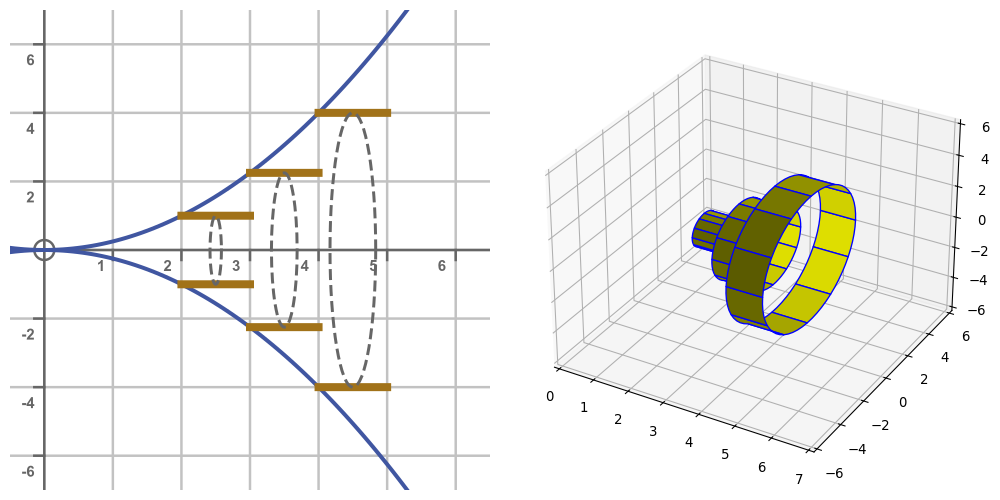
In this case, we have only used three cylinders to simplify the illustration, but we could use any number of cylinders. We already know the volume of a cylinder:
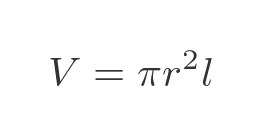
Suppose we have divided the solid into n cylinders, numbered 0 to (n - 1). Then:
- Cylinder number i will have its left-hand side at a position that we will call xi.
- The radius of cylinder i will be f(xi), that is the value of the function f at its starting point xi.
- The length of each cylinder will be equal to the total width divided by n. We will call this Δx.
So the volume of cylinder i will be:

We can find the approximate value of the total volume of the solid by adding up the n cylinder volumes:

As we increase n, the cylinders will get narrower and the sum of the volumes of the cylinders will get closer and closer to the true volume of the solid of revolution. In the limit, as n tends to infinity, the sum becomes an integral:

Here, a and b represent the extents of the volume on the x-axis, ie 2 and 5 in this example.
Calculating the volume
To calculate the volume we must evaluate the integral over the range 2 to 5. We first need to find the square of the function f(x):

Now we can substitute this function into the integral for the volume:

x to the power 4 is a standard integral. We use the power rule, which says that we must increment the power by 1 and divide by the new power:
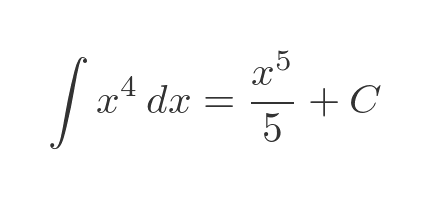
The volume integral includes an extra factor of π/16, so we must multiply the result above by that factor and evaluate it over the range 2 to 5:
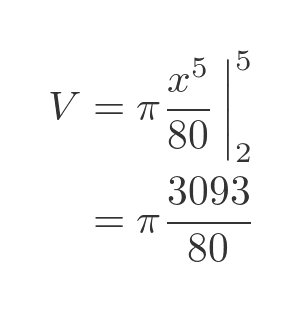
This gives a volume of approximately 121.46.
A quick calculation shows that this number is quite plausible. From the graph, we can see that the average value of f(x) is somewhere between 3 and 4. Let's call it 3.5. So the volume of the solid of revolution should be approximately equal to the volume of a cylinder of radius 3.5 and length 3. That is:

Bearing in mind that the radius value of 3.5 was just a rough guess, this result confirms that the value of the integral looks correct.
Calculating the volume of a sphere
We can use this technique to find the volume of a sphere. This will be interesting because we already know that the formula for the volume of a sphere is:
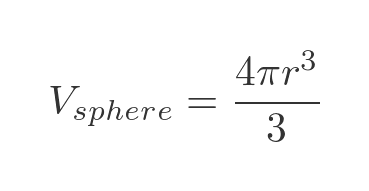
This equation can be proven without using calculus, but of course, we would expect the volume integration to give exactly the same result. Let's see!
Our approach will be to take a semicircle and rotate it about the x-axis to form a sphere. We will then calculate the volume just like the previous example. The standard equation of a circle radius r is:
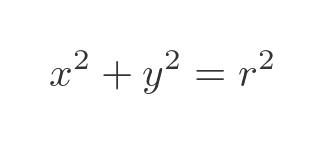
We can rearrange this to get y as a function of x:
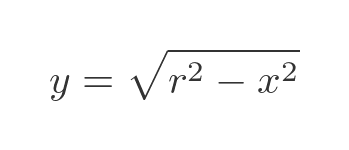
If we take the positive square root, we get the semicircle shown below. If we rotate that semicircle around the x-axis, it will form a sphere. The illustration shows the case when r = 1:

As before, we can approximate the volume of the sphere using cylindrical pieces:
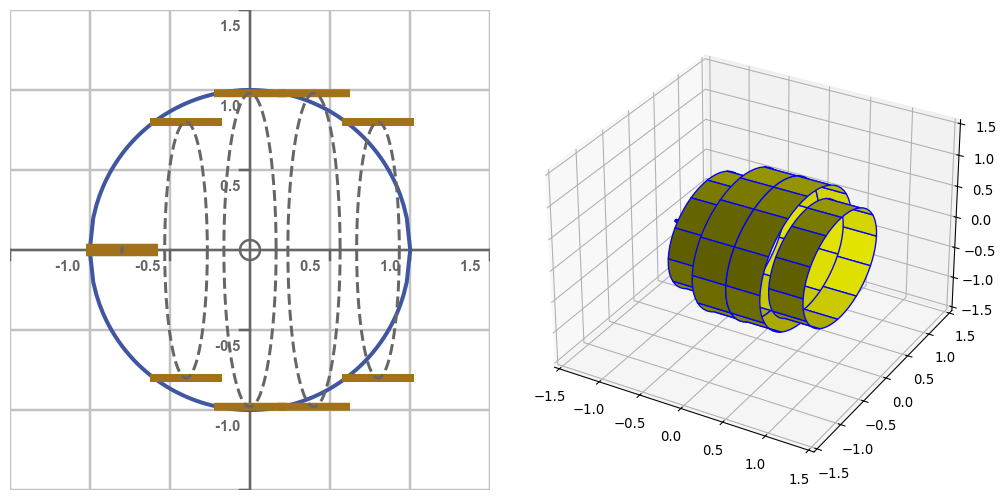
To find the exact volume, we use the same integral as before:

This time, we have a different f(x):
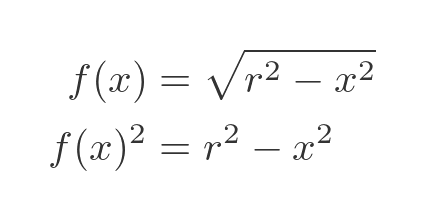
We need to integrate from -r to r:

The integral contains two terms that are both standard integrals (again using the power law):

So we can now evaluate the integral:
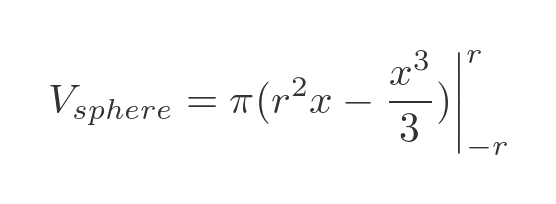
We now just need to plug in the values -r and r to find the volume:

Which is exactly what we expected.
Related articles
Join the GraphicMaths Newsletter
Sign up using this form to receive an email when new content is added to the graphpicmaths or pythoninformer websites:

Popular tags
adder adjacency matrix alu and gate angle answers area argand diagram binary maths cardioid cartesian equation chain rule chord circle cofactor combinations complex modulus complex numbers complex polygon complex power complex root cosh cosine cosine rule countable cpu cube decagon demorgans law derivative determinant diagonal directrix dodecagon e eigenvalue eigenvector ellipse equilateral triangle erf function euclid euler eulers formula eulers identity exercises exponent exponential exterior angle first principles flip-flop focus gabriels horn galileo gamma function gaussian distribution gradient graph hendecagon heptagon heron hexagon hilbert horizontal hyperbola hyperbolic function hyperbolic functions infinity integration integration by parts integration by substitution interior angle inverse function inverse hyperbolic function inverse matrix irrational irrational number irregular polygon isomorphic graph isosceles trapezium isosceles triangle kite koch curve l system lhopitals rule limit line integral locus logarithm maclaurin series major axis matrix matrix algebra mean minor axis n choose r nand gate net newton raphson method nonagon nor gate normal normal distribution not gate octagon or gate parabola parallelogram parametric equation pentagon perimeter permutation matrix permutations pi pi function polar coordinates polynomial power probability probability distribution product rule proof pythagoras proof quadrilateral questions quotient rule radians radius rectangle regular polygon rhombus root sech segment set set-reset flip-flop simpsons rule sine sine rule sinh slope sloping lines solving equations solving triangles square square root squeeze theorem standard curves standard deviation star polygon statistics straight line graphs surface of revolution symmetry tangent tanh transformation transformations translation trapezium triangle turtle graphics uncountable variance vertical volume volume of revolution xnor gate xor gate
